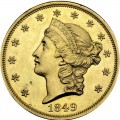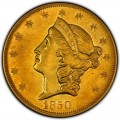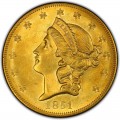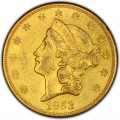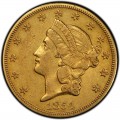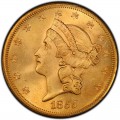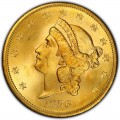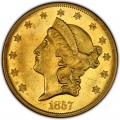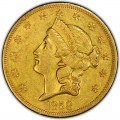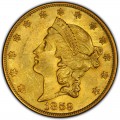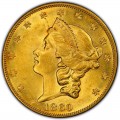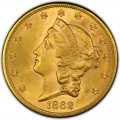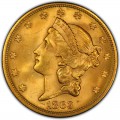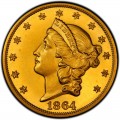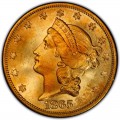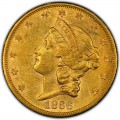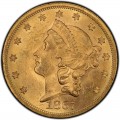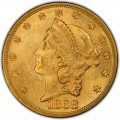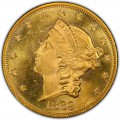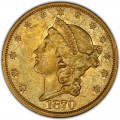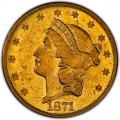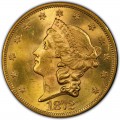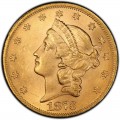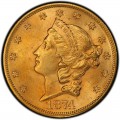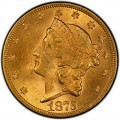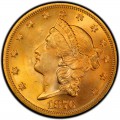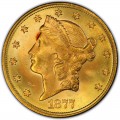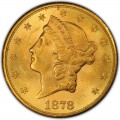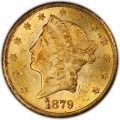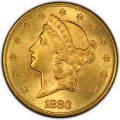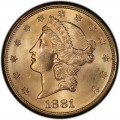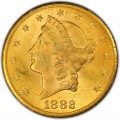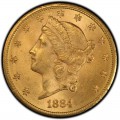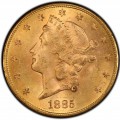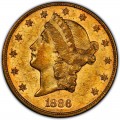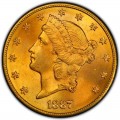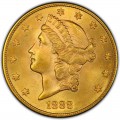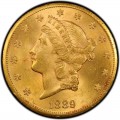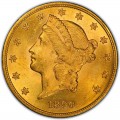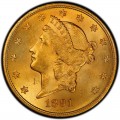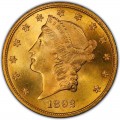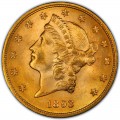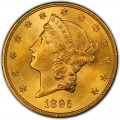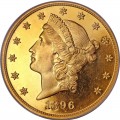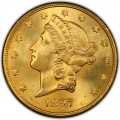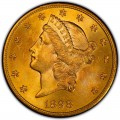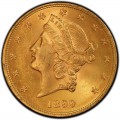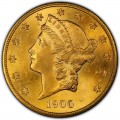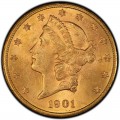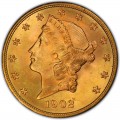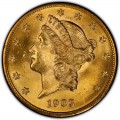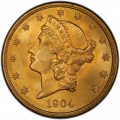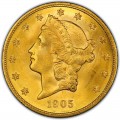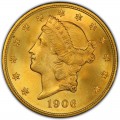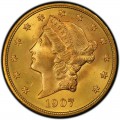- United States Coins
- Liberty Head Double Eagles
Liberty Head Double Eagles
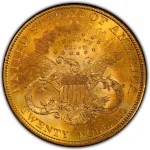 Liberty Head double eagles represent the first design for the $20 gold coin denomination, which was first struck in 1849. The 1849 Liberty Head double eagle, struck during the great Gold Rush, is a unique coin that resides safely at the Smithsonian Institution in Washington, D.C. Aside from that rare and priceless 1849 double eagle, Liberty Head $20 gold coins are relatively common in the realm of pre-1933 U.S. gold coins and are commonly encountered these days.
Liberty Head double eagles represent the first design for the $20 gold coin denomination, which was first struck in 1849. The 1849 Liberty Head double eagle, struck during the great Gold Rush, is a unique coin that resides safely at the Smithsonian Institution in Washington, D.C. Aside from that rare and priceless 1849 double eagle, Liberty Head $20 gold coins are relatively common in the realm of pre-1933 U.S. gold coins and are commonly encountered these days.
Liberty Head double eagles were designed by James B. Longacre, who served as Chief Engraver of the United States Mint from 1844 until his death in 1869. The Liberty Head double eagle is certainly one of his most popular coins, joining the ranks of several other legendary coins Longacre designed, including the Indian Head penny (1859-1909) and 2 Cent coin. The Liberty Head $20 gold double eagle is a coin that saw much use in the West, where gold coins largely dominated. However, the use of gold double eagles was mainly confined to banking and large transactions, especially in the 19th century. Remember, $20 represented a very large sum of money in the 19th century, and so most ordinary people wouldn’t just be carrying around a bunch of $20 gold double eagles.
Among the rarest Liberty Head double eagles are the 1854-O, 1856-O, 1861-S, 1870-CC, 1871-CC, 1879-O, and 1886 double eagles. Those pieces are each worth at least $15,000, though most of those listed are worth much more than that. In general, Liberty Head $20 gold double eagles should be regarded as generally scarce, even if among pre-1933 gold coins they are common. All pre-1933 gold coins are valuable, and in the case of circulated Liberty Head $20 gold coins, the minimum value tends to fall between $4,015 and $5,015 in uncirculated condition. However, all gold coin values are highly fluid given the fluctuating gold coin market.
Below is a list of Liberty Head Double Eagle info sheets for each year of issue. Each info sheet includes detailed pricing and mintage numbers for each variant.
-
{{#owner}}
-
{{#url}}
{{#avatarSrc}}
{{name}} {{/url}} {{^url}} {{#avatar}} {{& avatar}} {{/avatar}} {{name}} {{/url}} - {{/owner}} {{#created}}
- {{created}} {{/created}}

